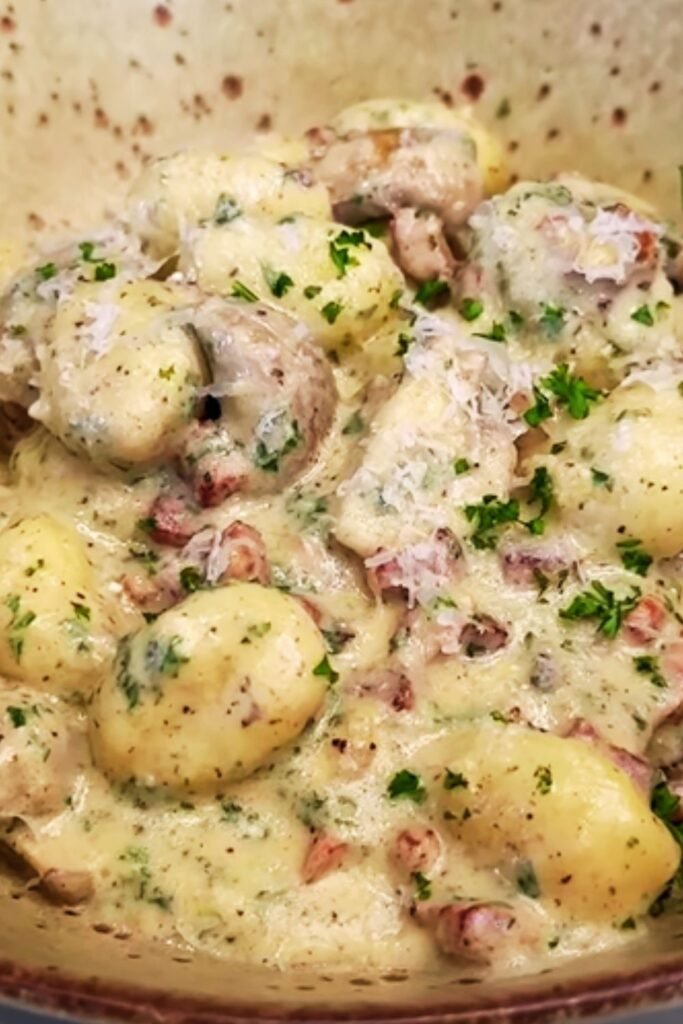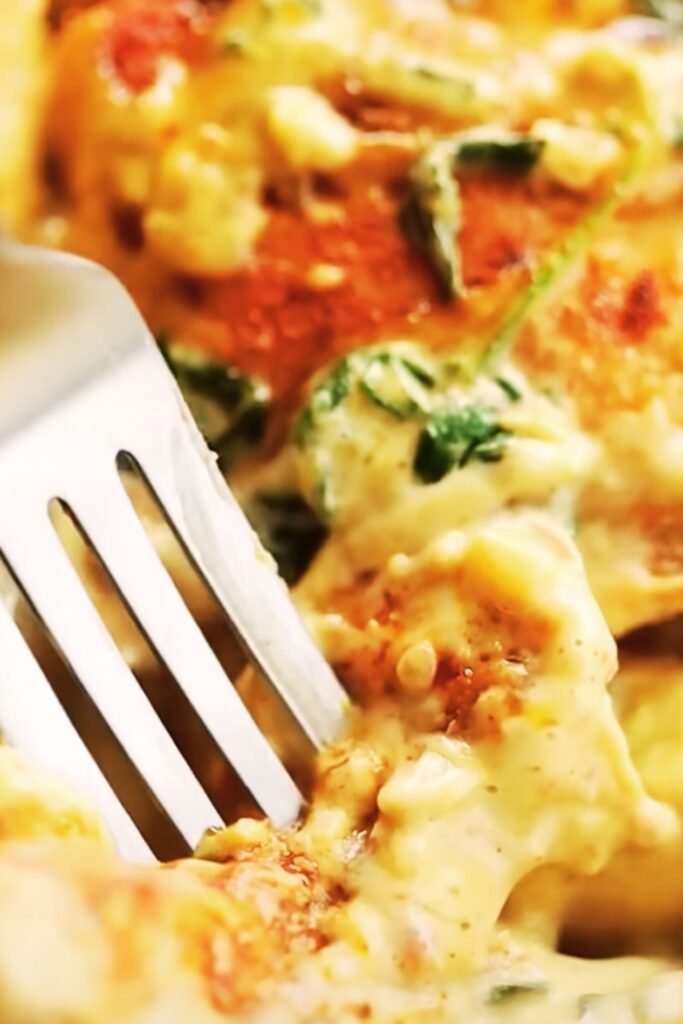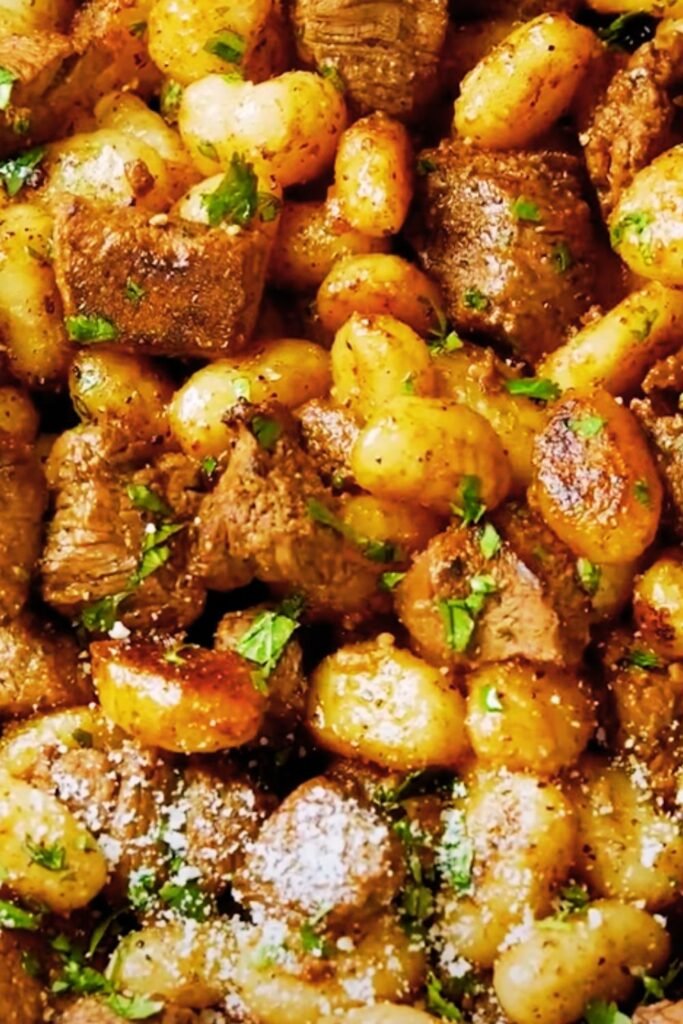Last Tuesday, my neighbor knocked on my door around 6 PM asking if I had any dinner ideas that wouldn’t require a trip to the grocery store. She had some steak in her freezer and a package of gnocchi sitting in her pantry, feeling completely stuck about what to do with them. I immediately knew exactly what to suggest – my favorite steak bites and gnocchi recipe that has saved countless dinner disasters in my own kitchen.
This dish emerged from one of those “what’s in the fridge” moments that every home cook knows too well. I had leftover steak from Sunday’s barbecue, a bag of frozen gnocchi I’d forgotten about, and the usual suspects lurking in my pantry. What started as a makeshift meal quickly became something my family requests weekly.
The genius of this combination lies in how these two ingredients complement each other perfectly. The steak provides that satisfying, protein-rich foundation while the gnocchi adds comfort and substance. When you bring them together in a creamy, herb-infused sauce, you create something that feels both rustic and refined.
I’ve served this to dinner guests who assumed I’d spent hours in the kitchen, when in reality, the entire process takes about 30 minutes from start to finish. The key is understanding how each component works and timing everything properly so nothing gets overcooked or sits around getting cold.
Breaking Down the Essential Components
Steak Selection Strategy
Ribeye: My personal favorite for this application. The marbling throughout ensures incredible flavor and prevents the meat from drying out when cut into smaller pieces. Yes, it’s more expensive, but the results justify the cost.
New York Strip: Offers excellent flavor with good tenderness. It holds up well to high-heat cooking and maintains its texture when cubed. This is my go-to when ribeye isn’t available.
Sirloin: A budget-friendly option that still delivers solid results. The key is not overcooking it – sirloin can become chewy if you’re heavy-handed with the heat.
Filet Mignon: The most tender option, though it requires careful attention due to its lean nature. It cooks quickly and can go from perfect to overcooked in seconds.
Gnocchi Fundamentals
Fresh Gnocchi: The gold standard when you can find quality versions. Look for gnocchi that feels light and pillowy, not dense or heavy. It cooks quickly and has an unmatched texture.
Frozen Gnocchi: My practical everyday choice. It’s consistent, convenient, and honestly, most people can’t distinguish it from fresh in the final dish. Don’t thaw it before cooking.
Shelf-Stable Gnocchi: Works adequately but tends to have a denser texture. Some brands are better than others, so it’s worth experimenting to find your preferred option.
Ingredient Breakdown and Shopping Guide
Primary Ingredients Matrix
| Ingredient | Quantity | Quality Indicators | Storage Tips |
|---|---|---|---|
| Steak (any preferred cut) | 1.5 lbs | Bright red color, minimal smell | Refrigerate 2-3 days, freeze 6 months |
| Gnocchi | 1 lb | Plump appearance, no cracks | Fresh: 2-3 days, Frozen: 6 months |
| Unsalted butter | 4 tbsp | Pale yellow, firm texture | Refrigerate 3 weeks, freeze 6 months |
| Fresh garlic | 4 cloves | Firm, no sprouting | Store in cool, dry place |
| Fresh thyme | 2 sprigs | Bright green, aromatic | Refrigerate in damp paper towel |
| Heavy cream | 2/3 cup | Fresh smell, smooth texture | Refrigerate, use within 5 days |
| Beef stock | 3/4 cup | Rich color, no off odors | Refrigerate 3 days, freeze 3 months |
| Olive oil | 2 tbsp | Golden color, fruity aroma | Store in cool, dark place |
Seasoning Composition
| Component | Measurement | Flavor Profile | Best Quality Source |
|---|---|---|---|
| Kosher salt | 2 tsp | Clean, mineral notes | Diamond Crystal or Morton |
| Black pepper | 1 tsp | Sharp, aromatic heat | Freshly cracked preferred |
| Garlic powder | 1/2 tsp | Mellow garlic background | Avoid clumping, fresh color |
| Paprika | 1/2 tsp | Sweet, mild smokiness | Hungarian or Spanish varieties |
| Dried oregano | 1/4 tsp | Earthy Mediterranean notes | Whole leaves, not powdered |
Essential Equipment Checklist
I’ve learned that having the right tools makes this recipe significantly easier and more successful. My cast iron skillet is absolutely crucial – it holds heat evenly and creates those beautiful sear marks that make the steak bites so appealing. A heavy-bottomed pan works too, but cast iron gives superior results.
My medium saucepan handles the gnocchi perfectly, while a fine-mesh strainer ensures proper drainage. I keep a wooden spoon specifically for scraping up fond, and my instant-read thermometer takes the guesswork out of doneness. Sharp knives make prep work effortless, and having everything measured and ready before starting makes the whole process flow smoothly.
Step-by-Step Preparation Method
Steak Preparation Technique
I start by cutting my steak into uniform 1-inch cubes. Consistency is crucial here – irregular pieces cook unevenly, resulting in some pieces being perfect while others are tough or undercooked. After cutting, I pat each piece completely dry with paper towels. This step is non-negotiable because surface moisture prevents proper searing.
My seasoning blend gets mixed thoroughly in a small bowl, then I toss the steak pieces until they’re evenly coated. I let them sit at room temperature for 20-30 minutes – this ensures even cooking throughout each piece.

Gnocchi Cooking Process
I bring a large pot of generously salted water to a rolling boil. The water should taste like seawater – this is where the gnocchi absorbs its foundational seasoning. Fresh gnocchi typically cooks in 2-3 minutes, floating to the surface when ready. I give them an additional 30 seconds after floating to ensure they’re cooked through.
Frozen gnocchi takes slightly longer – usually 3-4 minutes total. The key is watching for that telltale float, then timing carefully to avoid overcooking. Mushy gnocchi ruins the entire dish, and there’s no recovering from that mistake.
Mastering the Sear
This is where the magic happens. My cast iron pan needs to be screaming hot – I’m talking about visible heat waves rising from the surface. I add olive oil and immediately place the steak pieces in a single layer, ensuring they don’t touch each other.
The sizzle should be immediate and aggressive. I resist every urge to move them around – they need at least 2-3 minutes to develop that gorgeous golden crust. For medium-rare, I flip once and cook for another 1-2 minutes. The internal temperature should reach 135°F for perfect doneness.
Sauce Construction
After removing the steak, I immediately add butter to the same pan. Those brown bits stuck to the bottom represent pure concentrated flavor. I scrape them up with my wooden spoon as the butter melts, incorporating them into the developing sauce.
Minced garlic goes in next, followed by fresh thyme. I cook just until fragrant – about 30 seconds. Over-cooking garlic creates bitterness. Then comes the beef stock, which I use to deglaze the pan, scraping up any remaining fond. The liquid should bubble enthusiastically and reduce by half.
Finally, I add the cream and let it simmer until it coats the back of a spoon. This creates that luxurious, velvety texture that makes this dish so special.
Assembly and Final Touches

The final assembly requires some finesse. I return the cooked gnocchi to the pan with the sauce, gently folding them in. They should be heated through but not cooked further. Then the steak bites go back in, along with any accumulated juices.
I taste and adjust seasoning at this point – sometimes it needs a pinch more salt, sometimes a crack of fresh pepper. The sauce should coat everything beautifully without being too thick or too thin. If it’s too thick, I add a splash of stock. Too thin? I let it simmer for another minute to reduce slightly.
Nutritional Analysis and Health Benefits
Comprehensive Nutritional Profile
| Nutrient | Amount Per Serving | % Daily Value | Health Impact |
|---|---|---|---|
| Calories | 675 | 34% | Sustained energy for 3-4 hours |
| Protein | 42g | 84% | Muscle maintenance and growth |
| Carbohydrates | 44g | 15% | Quick energy source |
| Total Fat | 36g | 55% | Hormone production support |
| Saturated Fat | 16g | 80% | Flavor enhancement |
| Fiber | 2g | 8% | Digestive health |
| Sodium | 890mg | 39% | Electrolyte balance |
| Iron | 4.2mg | 23% | Oxygen transport |
| Vitamin B12 | 1.8mcg | 75% | Nerve function |
| Zinc | 6.1mg | 55% | Immune system support |
Macro Balance Assessment
This dish provides an excellent balance of macronutrients. The high protein content makes it incredibly satisfying, while the carbohydrates from the gnocchi provide immediate energy. The fats contribute to satiety and help absorb fat-soluble vitamins.
For those watching their intake, this recipe serves 4 people generously, making each portion reasonable despite the rich ingredients. The protein content is particularly impressive – nearly meeting daily requirements in a single meal.
Serving Suggestions and Accompaniments
Perfect Side Dish Pairings
I always serve this in warmed bowls to maintain the optimal temperature. The richness of the dish pairs beautifully with something bright and acidic. My favorite accompaniment is a simple arugula salad dressed with lemon vinaigrette and a touch of olive oil.
For vegetables, roasted Brussels sprouts with balsamic glaze create a beautiful contrast. The slight bitterness cuts through the cream sauce perfectly. Sautéed green beans with almonds, honey-glazed carrots, or roasted asparagus all work wonderfully.
A crusty French baguette or herb-infused dinner rolls make excellent additions for soaking up every drop of that incredible sauce. I’ve also served it with garlic-roasted cauliflower for a lower-carb option that still feels substantial.
Presentation Tips
The visual appeal of this dish is part of its charm. I like to finish each serving with a sprinkle of fresh thyme leaves and a light dusting of freshly cracked black pepper. Sometimes I add a small handful of toasted pine nuts for texture contrast.
For special occasions, I’ve served it in individual cast iron skillets, which keeps everything warm and adds rustic elegance. The key is serving immediately – this dish is best enjoyed hot and fresh.
Storage and Reheating Strategies
Proper Storage Methods
| Storage Type | Duration | Temperature | Container Type | Quality Notes |
|---|---|---|---|---|
| Refrigerator | 3-4 days | 35-40°F | Airtight glass containers | Sauce may thicken |
| Freezer | 2-3 months | 0°F | Freezer-safe containers | Texture changes slightly |
| Room Temperature | 2 hours max | Below 70°F | Covered serving dishes | For immediate consumption |
Reheating Without Quality Loss
I never use the microwave for reheating this dish – it makes the gnocchi rubbery and the steak tough. Instead, I use a large skillet over medium-low heat, adding a splash of cream or stock if the sauce seems too thick.
The key is gentle, gradual heating. I stir frequently and add liquid as needed to restore the original consistency. For frozen leftovers, I thaw them overnight in the refrigerator before reheating.
Advanced Variations and Modifications
Flavor Profile Adaptations
I love experimenting with different herb combinations. Fresh rosemary adds an earthy, pine-like complexity that pairs beautifully with beef. Sage creates a more autumnal flavor profile, while fresh basil brings unexpected brightness.
For a lighter version, I sometimes substitute Greek yogurt for half the cream, whisking it in off the heat to prevent curdling. For more richness, a tablespoon of cream cheese or mascarpone elevates the sauce to restaurant quality.
Vegetable Integration
Mushrooms are my favorite addition – I sauté them before cooking the steak and add them back with the sauce. Button mushrooms work well, but cremini or shiitake mushrooms take it to the next level.
Cherry tomatoes add beautiful color and a touch of acidity that brightens the entire dish. I’ve also had success with roasted bell peppers, wilted spinach, and even roasted butternut squash for fall variations.

Troubleshooting Common Issues
Preventing Cooking Disasters
The most common mistake I see is overcooking the steak bites. They continue cooking from residual heat even after removal from the pan. I always err on the side of undercooking initially – you can always return them to the pan for another minute if needed.
Mushy gnocchi is another frequent problem. I watch them carefully once they hit the boiling water. The moment they float, I start timing. The texture should be tender but still have a slight bite – what Italians call “al dente.”
Sauce Consistency Solutions
If my sauce becomes too thick, I add stock or cream gradually until it reaches the right consistency. If it’s too thin, I let it simmer longer to reduce. The goal is a sauce that coats the ingredients without being gluey.
Sometimes the sauce can break if the heat is too high when adding the cream. If this happens, I remove the pan from heat and whisk in a tablespoon of cold butter to re-emulsify it.
Frequently Asked Questions
Q: Can I use different cuts of steak for this recipe? A: Absolutely! I’ve tested this recipe with ribeye, New York strip, sirloin, and filet mignon. Each brings its own characteristics – ribeye for richness, strip for balance, sirloin for value, and filet for tenderness. The key is adjusting cooking times based on the cut’s fat content and thickness.
Q: What’s the best way to tell when steak bites are perfectly cooked? A: I use a combination of visual cues and touch. The exterior should be golden brown with a nice crust, while the interior should feel similar to the fleshy part of your palm when you touch your thumb to your middle finger. For precision, an instant-read thermometer should read 135°F for medium-rare.
Q: Can I make this dish ahead of time for entertaining? A: While it’s definitely best served fresh, you can prepare components separately. Cook the gnocchi and steak bites, then store them separately in the refrigerator for up to 24 hours. Make the sauce fresh when ready to serve, then gently combine everything. This maintains the best texture and flavor.
Q: Is there a way to make this dish lighter without sacrificing flavor? A: I’ve experimented with several modifications. You can substitute half the cream with whole milk, use Greek yogurt (added off heat), or reduce the butter and add more herbs. I’ve also tried using shiitaki mushrooms to add umami depth without extra calories.
Q: My gnocchi keeps falling apart during cooking. What am I doing wrong? A: This usually indicates overcooking or rough handling. Fresh gnocchi is particularly delicate. Use a slotted spoon for transferring, and be gentle when folding into the sauce. Also, make sure your water is at a rolling boil before adding the gnocchi – this cooks them quickly and evenly.
Q: Can I freeze the completed dish? A: I don’t recommend freezing the complete dish because cream sauces can separate and gnocchi texture changes significantly. It’s better to freeze the cooked steak bites separately and make fresh gnocchi and sauce when you’re ready to serve.
Q: How do I know when my pan is hot enough for searing? A: The pan should be smoking lightly, and a drop of water should sizzle and evaporate immediately. I also test by holding my hand about 5 inches above the surface – if I can feel significant heat radiating upward, it’s ready. This high heat is essential for that flavorful crust.
Q: What’s the secret to keeping steak bites tender? A: Three crucial factors: don’t overcook them, let the meat come to room temperature before cooking, and avoid moving them too much in the pan. Let them develop a proper sear before flipping. Also, cutting against the grain helps with tougher cuts like flank steak.
Q: Can I substitute dried herbs for fresh ones? A: While fresh herbs are preferable, dried herbs can work in a pinch. Use about one-third the amount of dried herbs compared to fresh. Add them earlier in the cooking process to allow their flavors to bloom. Fresh thyme is particularly important for this recipe’s flavor profile.
Q: How can I add vegetables without overwhelming the dish? A: I suggest limiting yourself to one or two vegetables to maintain balance. Sautéed mushrooms, cherry tomatoes, or wilted spinach work beautifully. Cook them separately and add them with the sauce. The key is choosing vegetables that complement rather than compete with the main ingredients.
This steak bites and gnocchi recipe has transformed my approach to weeknight cooking. It proves that impressive dinners don’t require complicated techniques or exotic ingredients – just quality components treated with respect and proper timing. Once you master this foundation, you’ll find endless ways to make it your own.